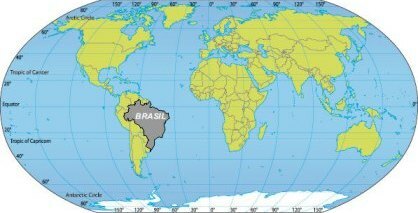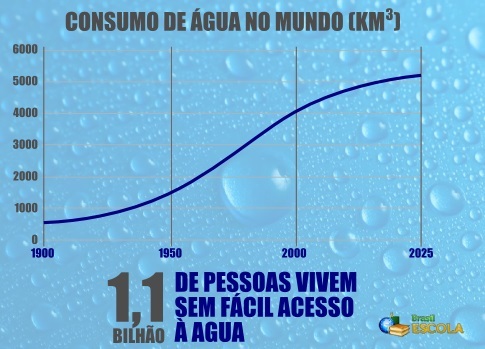O Brazilian territory it is markedly noted for its great extension. There are 8,547,403 km², which makes it the third largest country in the Americas and the fifth largest in the world, just behind Russia, Canada, China and the United States. Due to its territorial size, it is often said that Brazil is a country with continental dimensions.
Brazil is a country whose territory is considered continuous, that is, there is no isolated domain from the rest of the country, with the exception of a few islands located along the Atlantic Ocean. An example of a country whose territory is discontinuousare the United States, which has islands in different parts of the world and the state of Alaska, thousands of kilometers from the others.
From the point of view of location, Brazil is located on the American Continent, more precisely in South America. It is also located in three different hemispheres at the same time: all its territory is in the western hemisphere (the one that is located west of the Greenwich Meridian), most of it in the Southern Hemisphere (below the Equator) and a small part in the Hemisphere North. Its territory borders all South American countries, with the exception of Ecuador and Chile. The coast is bathed only by the Atlantic Ocean.

Location of Brazil in the World
Brazil is made up of 26 states and the Federal District, where the capital Brasília is located. These states constitute the country as a Federative Republic, that is, a state composed of three branches: legislative, executive and judiciary.
Economically speaking, our country is the largest in Latin America – and also the third largest among all countries in the Americas –, being among the 10 largest in the world. Despite this, it is considered an underdeveloped country, with an emerging economy, with recent economic growth registered in the last decades. Thus, the country is part of the Mercosur (Common Market of the Southern Cone), an economic bloc that involves some South American countries. It is also considered one of the BRICS (Acronym for Brazil, Russia, India, China and South Africa), which is not an economic bloc, but a term to designate those countries with great potential for growth and development.
Brazil is considered a populous country, with the fifth largest population in the world, surpassing 190 million inhabitants recently. However, its territory is not densely populated, that is, the number of inhabitants per km² is considered low. Even so, some regions are heavily populated, due to the poor distribution of population throughout the territory, concentrated mostly in the Southeast region. Look at the map below:

Brazilian Demographic Density Map
Due to the colonization and slavery processes that marked the history of Brazil, the country's ethnic matrix is very broad and varied, with the most diverse descendants, among which those from indigenous tribes, others related to European and Asian peoples, and others from different ethnicities stand out. African women. For this reason, Brazil is considered as a Multinational State, that is, with several different nations.
The Brazilian relief is geologically old, which means that its geological structures were formed during the first ages of formation of the planet. For this reason, the relief is a little more rugged and the mountains are not as high as in other places, because its space has been shaped for a longer time by the agents of relief modification (water, rain, wind, etc.).
As we are not located near areas where two tectonic plates meet, earthquakes and volcanoes are practically non-recorded. Furthermore, because of our dense vegetation and the large amount of biomes present in the territory Brazilian, living conditions are considered biologically favorable, with very few deserts and areas uninhabitable.
Finally, it is important to highlight the importance of the country in terms of its natural and human resources. For this reason, we have to value the territory and the people who inhabit it, providing a better distribution of the wealth generated here.
By Rodolfo Alves Pena
Graduated in Geography



